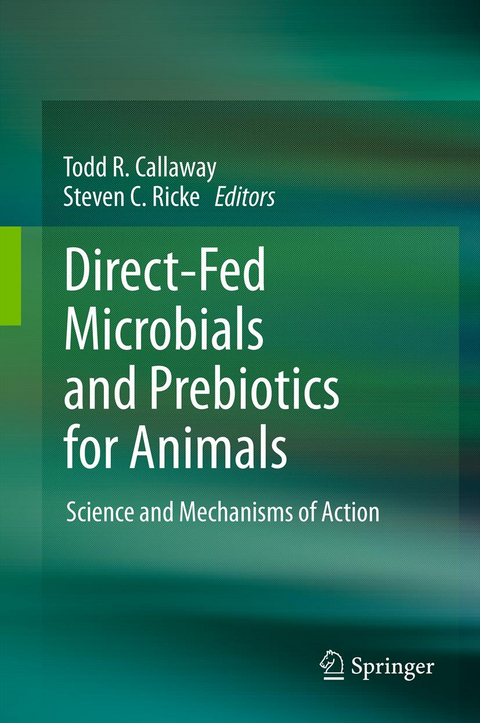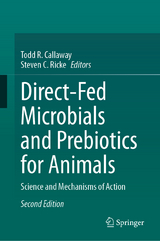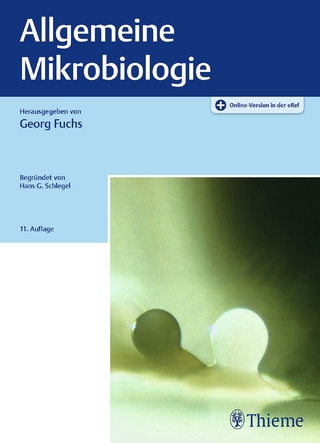
Direct-Fed Microbials and Prebiotics for Animals
Springer-Verlag New York Inc.
978-1-4939-0057-2 (ISBN)
It appears that early establishment and retention of an ecological balance in the gastrointestinal tract is an important first step for an external biological additive to be effective in young animals. Therefore, it is possible that the effectiveness of direct fed microbials and prebiotics in some animal species may only be an indirect consequence of speeding up the establishment and succession of the dominant microflora characteristic of the adult gastrointestinal tract. Consequently, an understanding of the key processes during establishment of microflora in the gastrointestinal system that lead to the subsequent fermentation characteristics and ecological balance exhibited by the highly protective microflora is needed. Several additional areas of future research directions are also suggested for further development and implementation of these biological approaches as new molecular and drug delivery technologies become available. Continued research on direct fed microbials and prebiotics in general should markedly expand their commercial applications.
Dr. Todd R. Callaway received his B.S. Agriculture degree in Animal Health and Animal and Dairy Sciences, as well as his M.S. in Animal and Dairy Sciences from the University of Georgia. He received his Ph.D. in Microbiology from Cornell University, with minors in Biochemistry and Animal Science. Dr. Callaway is a Research Microbiologist for the Agricultural Research Service of the U.S. Department of Agriculture, and has served as a Science Fellow for the Foreign Agriculture Service and the U.S. State Department. He has adjunct faculty appointments in the Department of Agriculture at Angelo State University, the Animal and Dairy Sciences Department at Mississippi State University, and the Department of Animal Science at Texas A&M University. Dr. Callaway has a research program focused on manipulating the microbial ecology of the animal gastrointestinal tract to reduce populations of foodborne pathogenic bacteria in food animals before they enter the food chain. Dr. Steven C. Ricke received his B.S. degree in Animal Science and M.S. degree in Ruminant Nutrition from the University of Illinois and his Ph.D. degree from the University of Wisconsin with a co-major in Animal Science and Bacteriology. He is currently holder of the Donald “Buddy” Wray Endowed Chair in Food Safety and Director of the Center for Food Safety at the University of Arkansas. He is also a faculty member of the Department of Food Science, the Department of Poultry Science and the Cellular and Molecular Graduate program. Dr. Ricke’s research program is primarily focused on virulence and pathogenic characteristics of foodborne salmonellae.
I. Overview of Direct-Fed Microbials and Prebiotics and Their Interactions with the Host.- 1. The Commensal Microbiota.- 2. Prebiotics of Plant and Microbial Origin.- 3. Microbial Species Characteristics and Selection.- 4. Genomics of Probiotic-Host Interactions.- 5. The Effects of Pre- and Probiotics on the Host Immune Response.- II. Current and Future Status of Practical Applications and Challenges.- 6. Current Status of Practical Applications: Pets.- 7. Current Perspectives on Probiotics in Poultry Preharvest Food Safety.- 8. Current Status of Practical Applications: Probiotics in Dairy Cattle.- 9. Current Future Status of Practical Applications: Beef Cattle.- 10. Future Challenges of Administration of Direct-Fed Microbial Supplementation to Swine.- 11. Characteristics and Modification of the Intestinal Tract Microbiota of Channel Catfish Ictalurus punctatus.- 12. The Use of Direct-Fed Microbials as a Pre-Harvest Food Safety Intervention in Cattle.
| Erscheint lt. Verlag | 3.3.2014 |
|---|---|
| Zusatzinfo | XIV, 206 p. |
| Verlagsort | New York |
| Sprache | englisch |
| Maße | 155 x 235 mm |
| Themenwelt | Naturwissenschaften ► Biologie ► Mikrobiologie / Immunologie |
| Technik ► Lebensmitteltechnologie | |
| Technik ► Umwelttechnik / Biotechnologie | |
| ISBN-10 | 1-4939-0057-9 / 1493900579 |
| ISBN-13 | 978-1-4939-0057-2 / 9781493900572 |
| Zustand | Neuware |
| Informationen gemäß Produktsicherheitsverordnung (GPSR) | |
| Haben Sie eine Frage zum Produkt? |
aus dem Bereich



